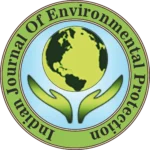IJEP 44(9): 817-824 : Vol. 44 Issue. 9 (September 2024)
K. Suganeswaran1*, C. Vinodhini2, A. Ramaprabha1, P. Boopathi Raja1 and T. Dhinakar1
1. Kongu Engineering College, Department of Mechatronics Engineering, Erode – 638 060, Tamil Nadu, India
2. Kumaraguru Institute of Agriculture, Department of Social Science, Erode – 638 315, Tamil Nadu, India
Abstract
Sericulture, an age-old agricultural practice focused on nurturing silkworms through the cultivation of mulberry plants, plays a vital role in the global textile industry. However, the traditional method of manually cutting mulberry plants has remained a labour-intensive and time-consuming process. Another type of machine has been developed, which utilizes petrol engines to reduce the labour intensity and to cut efficiency in mulberry plant harvesting. The use of petrol engines raises environmental concerns due to carbon emissions and air pollution. In regions where environmental regulations are stringent, the environmental impact of such machines may be a consideration. To address these challenges, this paper introduces an electrically powered, semi-automated, pollution-free mulberry plant-cutting machine, that is free from polluting emissions. Furthermore, it incorporates a fertilizer hopper, enabling simultaneous fertilization of the plants immediately after cutting. This innovative technology not only reduces the physical strain on farmers but also optimizes mulberry crop growth, ultimately leading to healthier silkworms. It offers a more sustainable and efficient alternative to traditional petrol-powered solutions. The incorporation of an ESP8266 microcontroller allows for remote control, enhancing operator convenience and ensuring seamless, error-free operation in sericulture.
Keywords
Sericulture, Mulberry plants, Automation, Pollution free, Remote control
References
- Anota, L., M. Gupta and D. George. 2007. Design, development and evaluation of a mulberry leaf harvester. International Agricultural Engineering Conference on Cutting edge technologies and innovations on sustainable resources for world food sufficiency. Bangkok, Thailand. Proceedings, pp 3-6.
- Charwak, M.K., et al. Design and fabrication of crop cutting machine. Int. J. Eng. Res. Tech., 8(6).
- Dandin, S. and S. Verma. 2002. Mechanization in sericulture–Need and scope. Indian Silk. 41(1): 9-12.
- Ghumadwar, M.R. and M.V. Bankar. 2016. Design and analysis of crop cutter. Int. Res. J. Eng. Tech., 3(7): 1095-1099.
- Gowda, R., A. Murthy and E. Muniraju. 2011. Technology adoption in sericulture management in India: A study. IUP J. Operations Manage., 10(4): 51-62.
- Gunasheela, T., et al. 2018. Implementation of sericulture farm automation using sensor network and GSM technology. Int. J. Pure App. Mathematics. 119(14): 13-20.
- Jang, R., et al. 2020. Design and implementation of unmanned agricultural machinery. IOP Conf. Series Mater. Sci. Eng., 799(1): 012032.
- Kumar, R.R., et al. 2021. Smart mulberry plant cutter. IOP Conf. Series Mater. Sci. Eng., 055:012037.
- Balaji, A., et al. 2015. Design and fabrication of agro-based automatic plantain tree cutting machine. Int. J. Innovative Res. Sci. Eng. Tech., 4(3): 1776-1770.
- Mahajan, R. and A. Balasubramanian. 2013. Interactive WiFi connectivity for moving vehicles. US20 100020774A1. Google Patents.
- Prasanna, R.S., et al. 2021. Concept of automated agriculture-auto techno farming. IOP conf. series mater. sci. eng., 1055 (1): 012048.
- Prem, M., et al. 2017. A critical study on crop harvesting machines. Multilogic Sci., 7(XXIV): 63-68.
- Tumusiime, G. 2016. Design and construction of a manually operated mulberry leaf chopping machine. Busitema University, Uganda.
- Ullegaddi, V. and B. Chetan. 2018. Design and analysis of cutting mechanism for crop harvester. J. Recent Trends Mechanics. 3(2): 1-5.
- Verma, A., M. Sahu and K.D. Sadashivrao. 2018. Studies on drudgery reduction in mulberry cultivation through improved machines. Agric. Eng. Today. 42(3): 41-49.
- Wu, D.L., X. Mao and J.P. Xu. 2012. The development of hydraulic mulberry shoots trimmer intended for micro-farming equipment. Appl. Mechanics Mater., 229: 2448-2453.
- Rafi, S., et al. 2022. Role of artificial intelligence in agriculture sustainability : an example from India. in Towards sustainable natural resources: Monitoring and managing ecosystem biodiversity. Ed M. Rani, B.S. Chaudhary, S. Jamal and P. Kumar. Springer Cham. pp 275-293.
- Manivannan, R., et al. 2022. Modelling and analysis of agriculture three in one machine using solar power. Mater. Today Proceedings. 64: 506-510.
- Agravat, V., et al. 2023. Development of electric harvester. Pharma Innovation. 12(5): 1087-1089.
- Pooja, V. 2018. Computer aided analysis of ‘sit and stand’ type coconut climbers for mechanical stability. PG Thesis. Department of Farm Machinery and Power Engineering, Kelappaji College of Agricultural Engineering and Technology, Tavanur.
